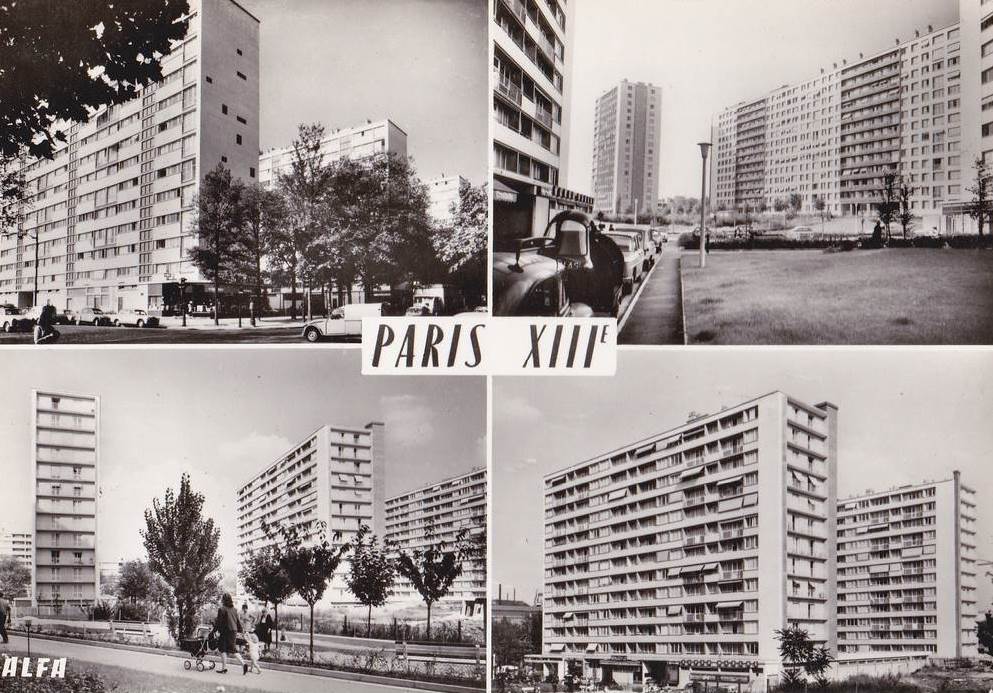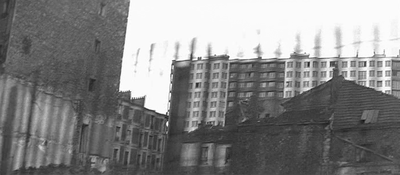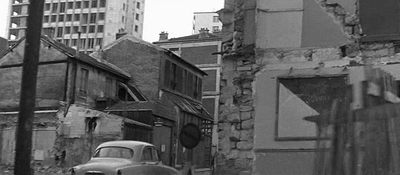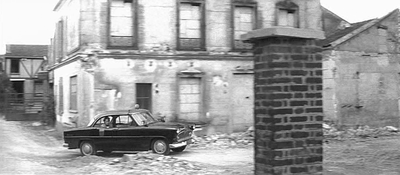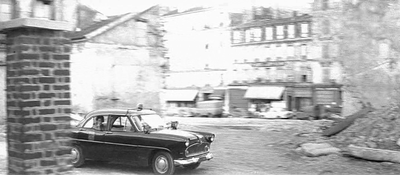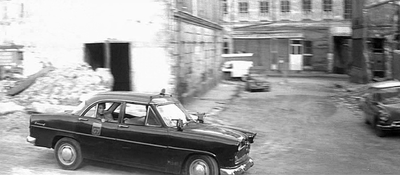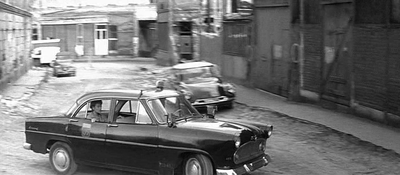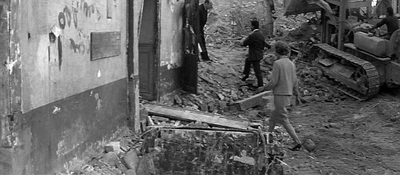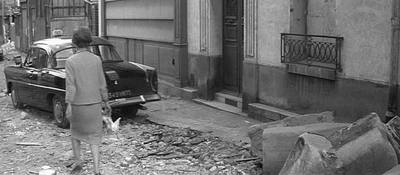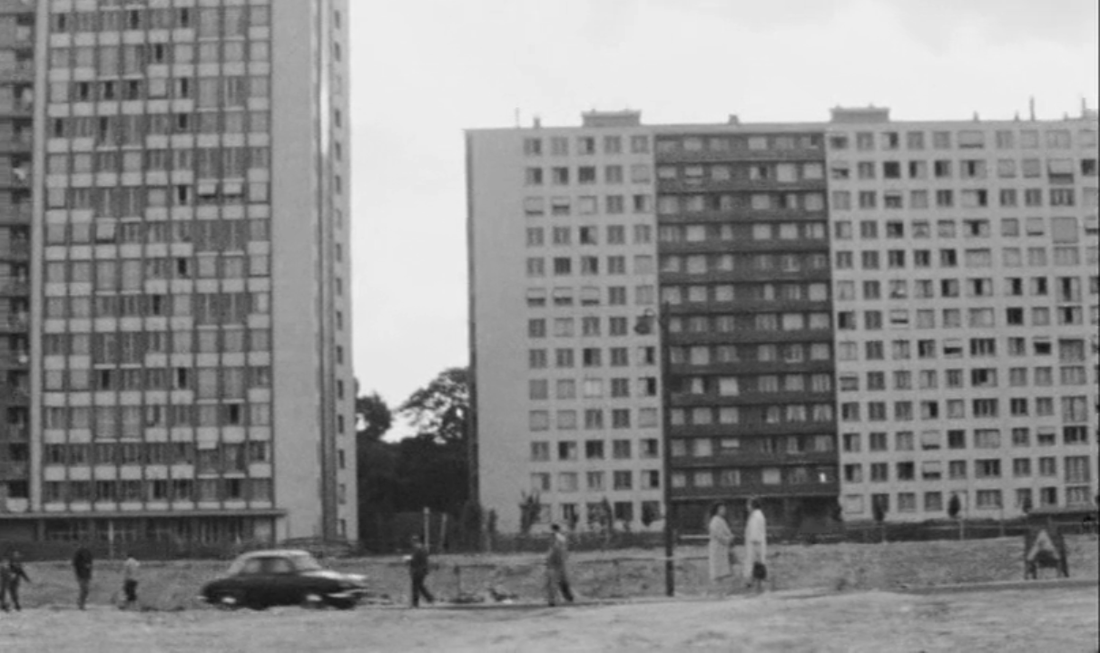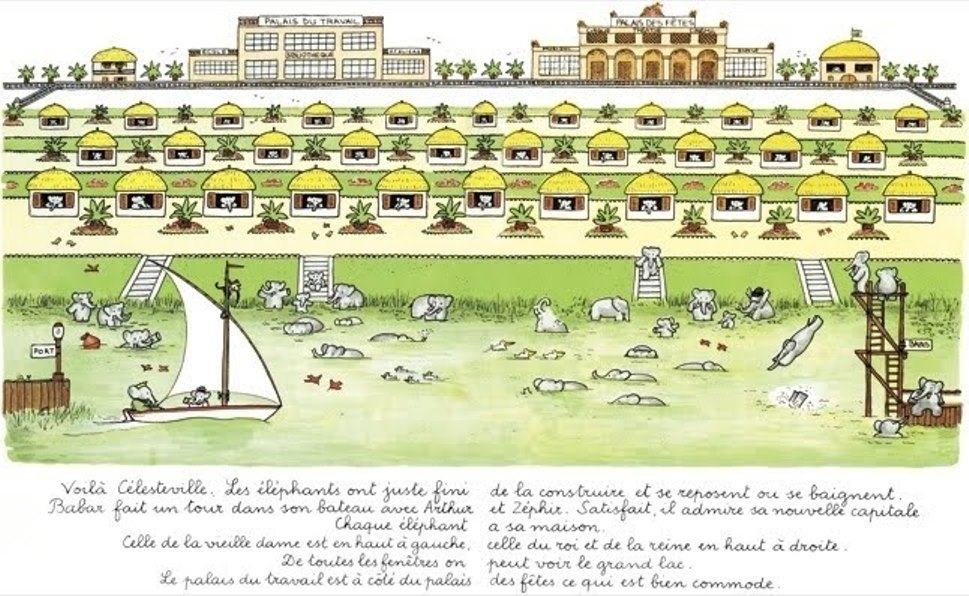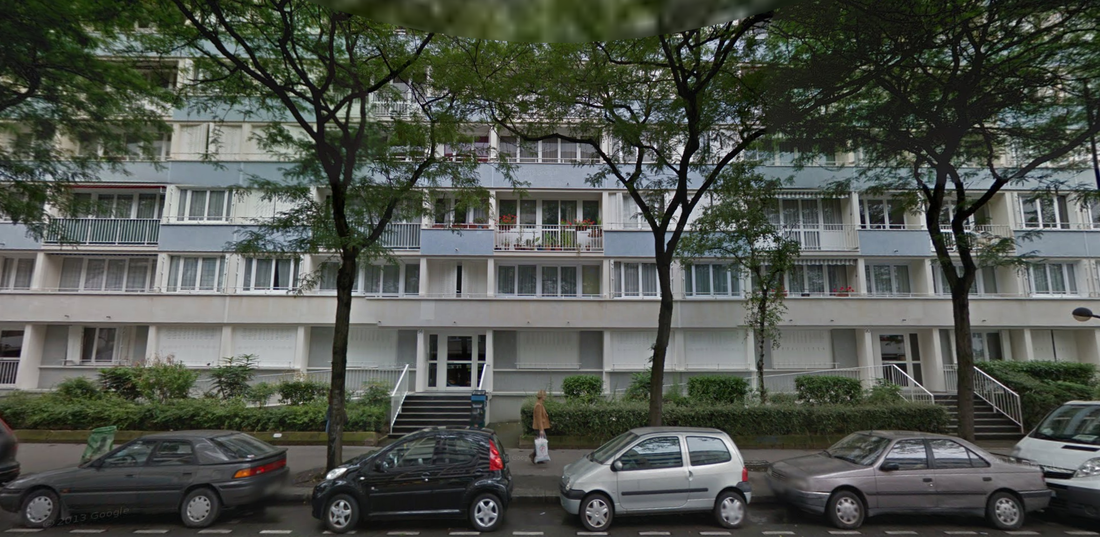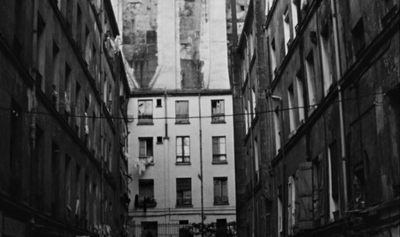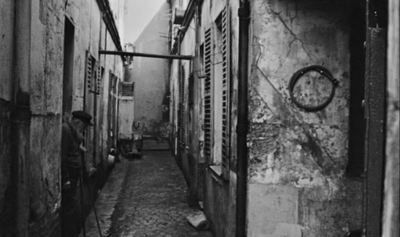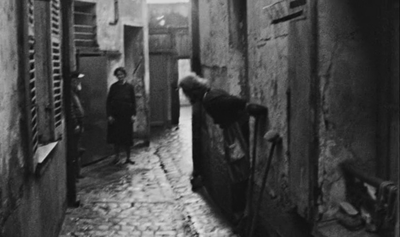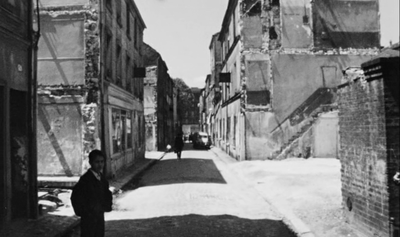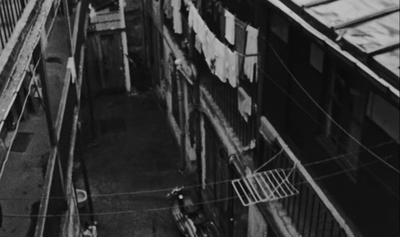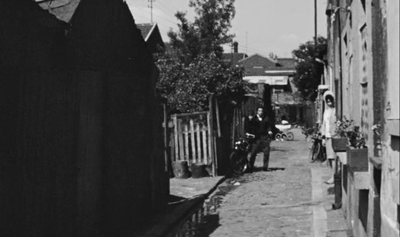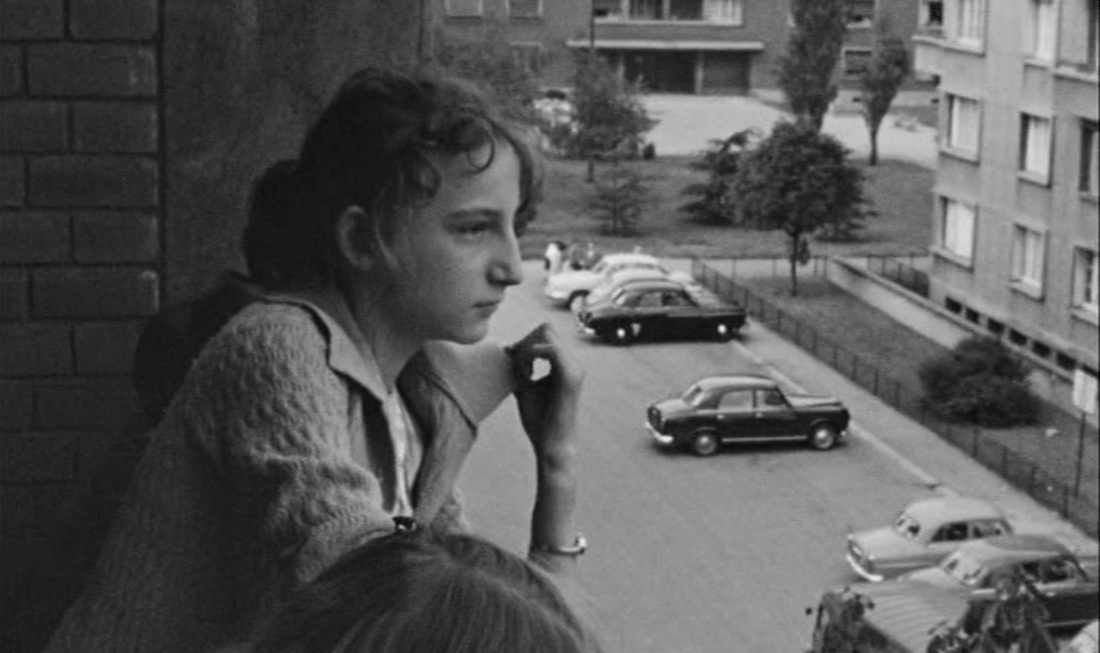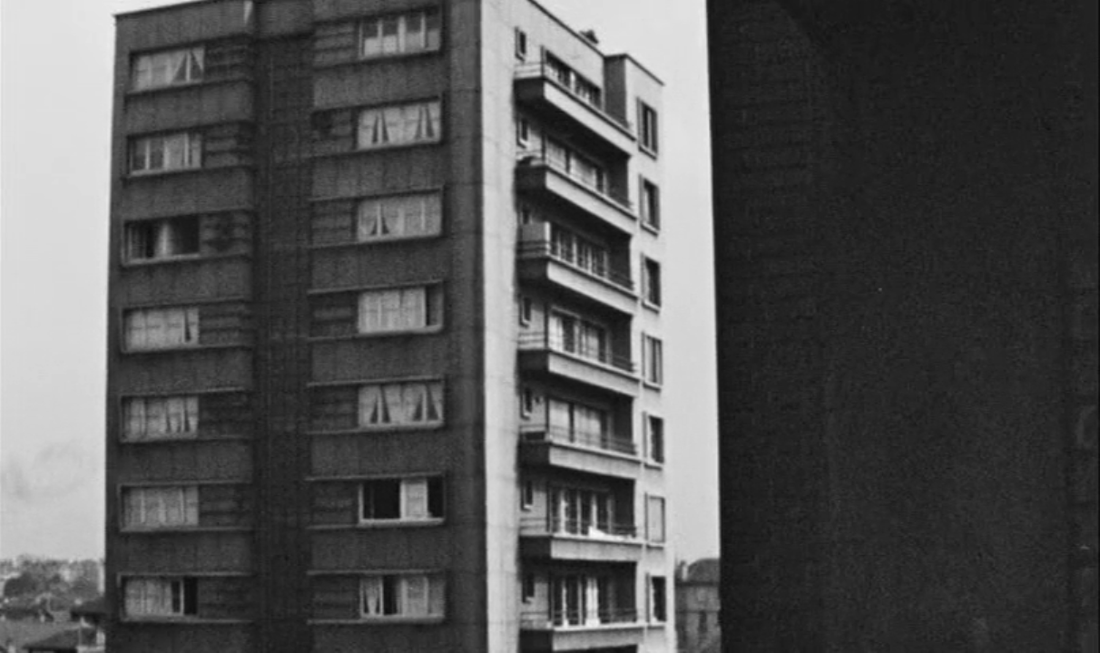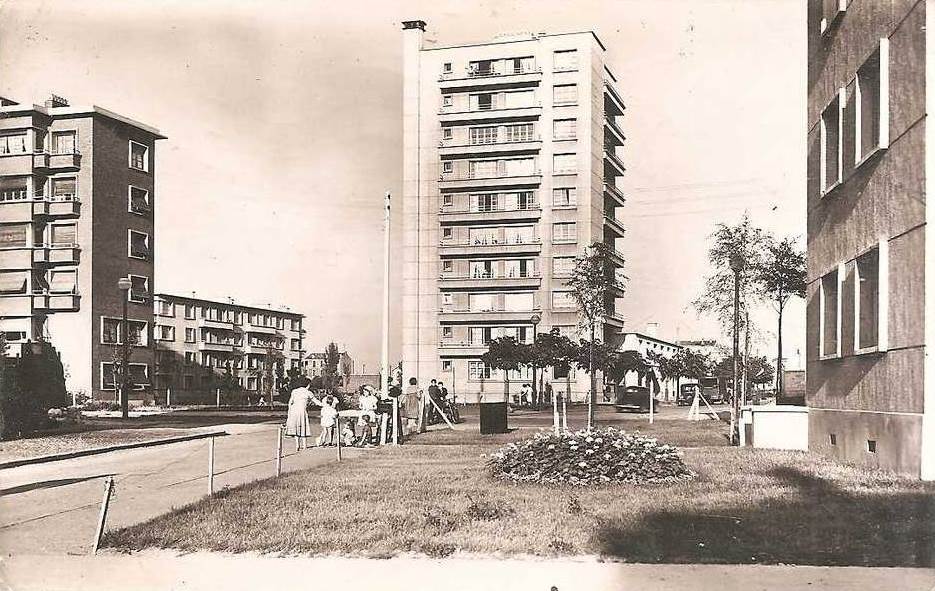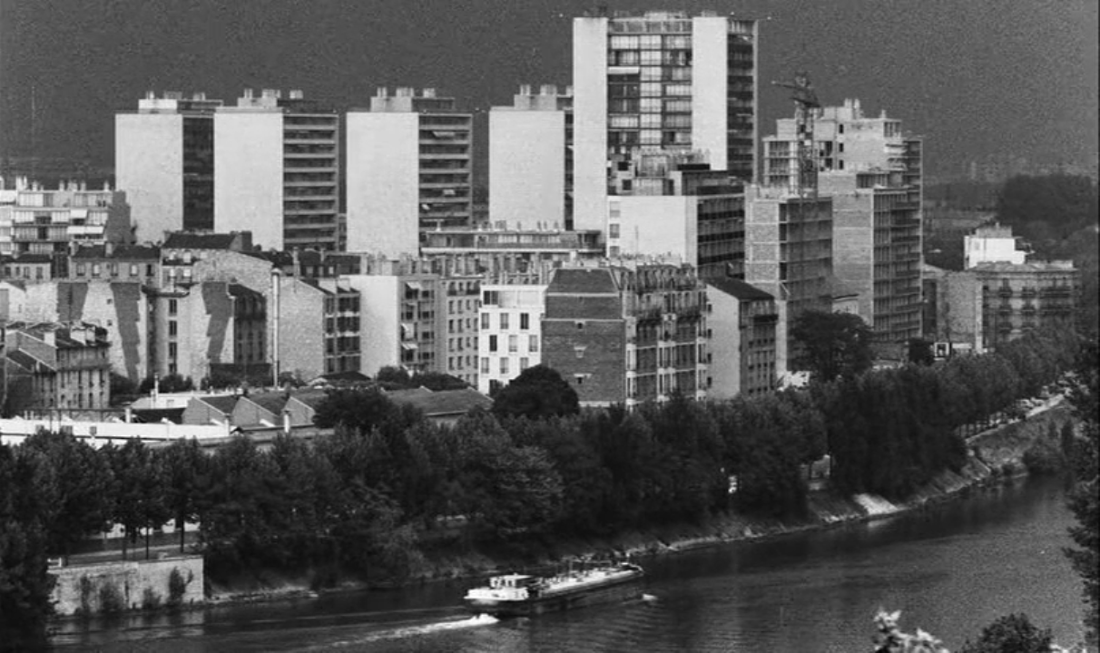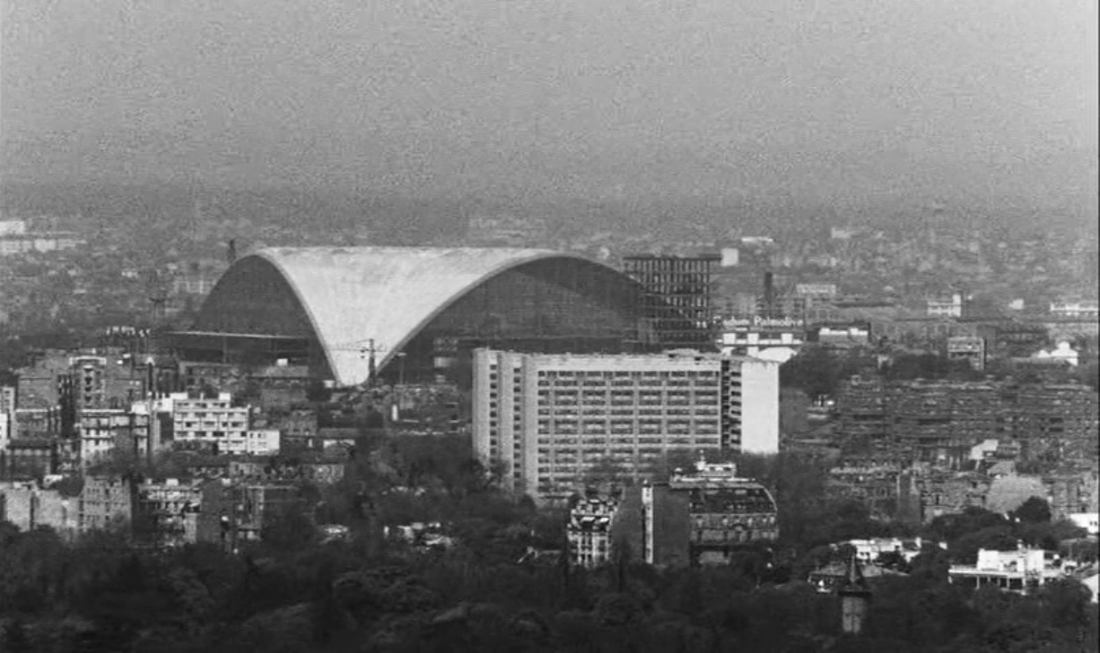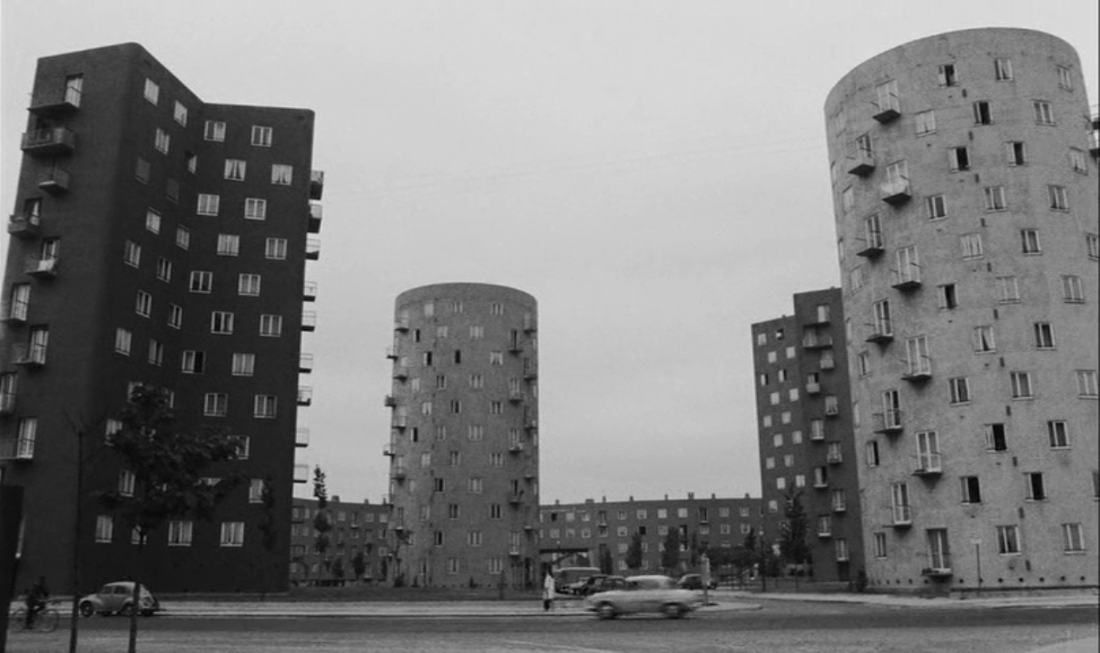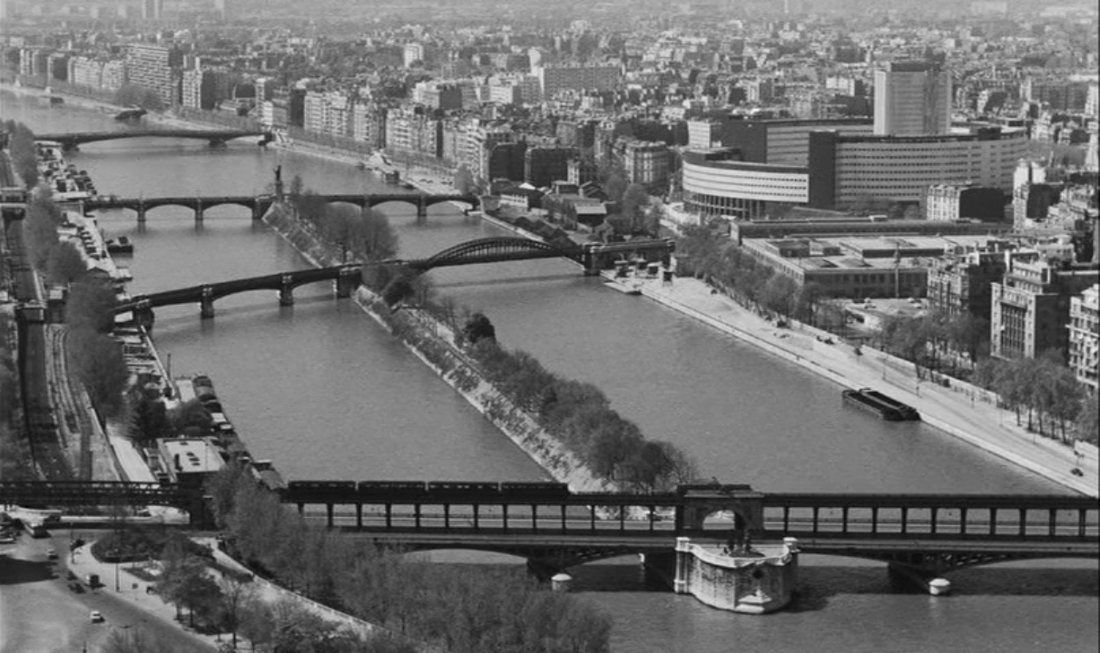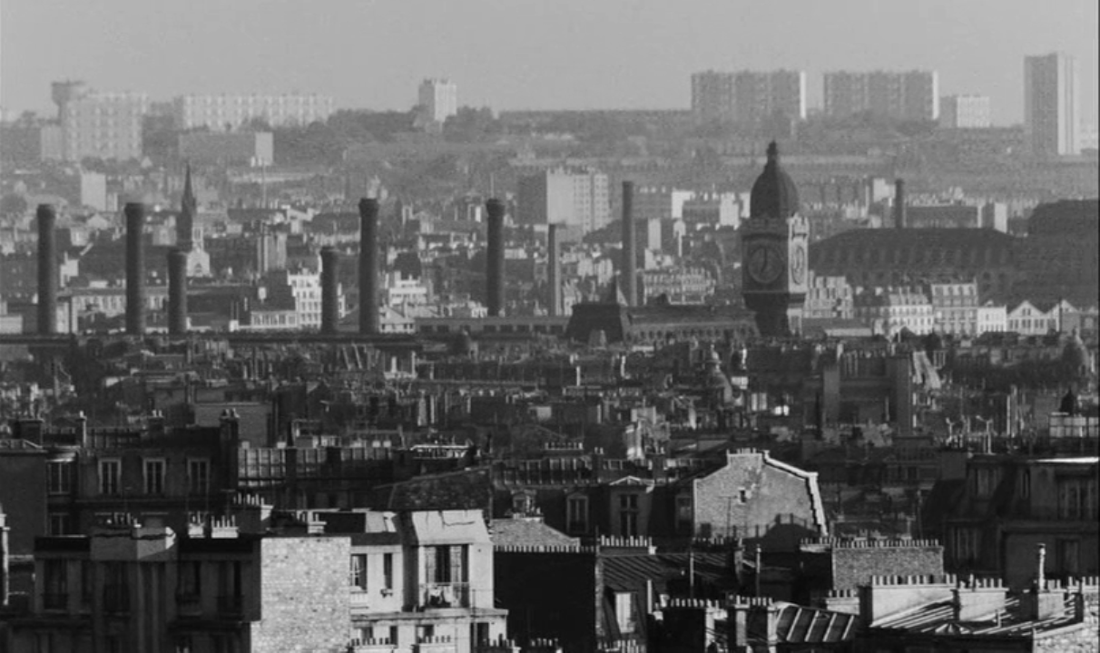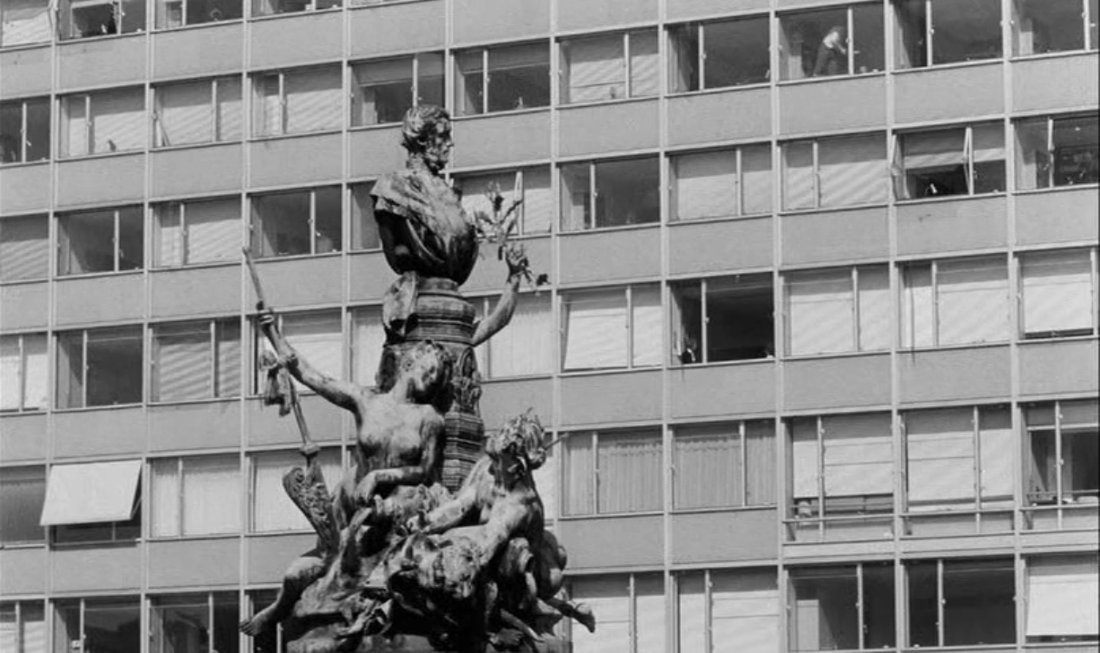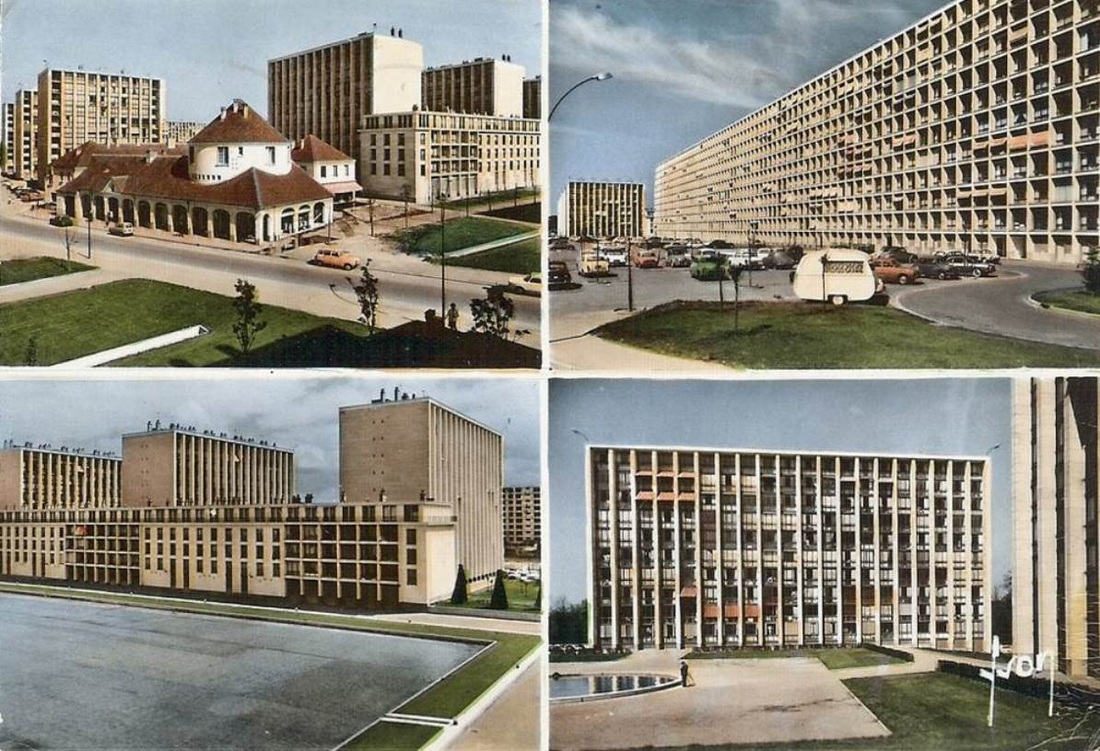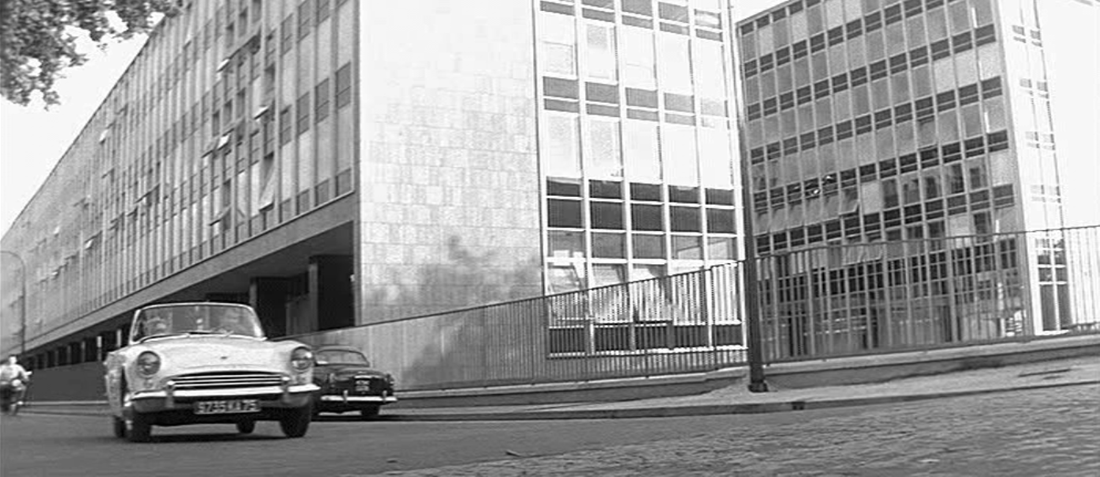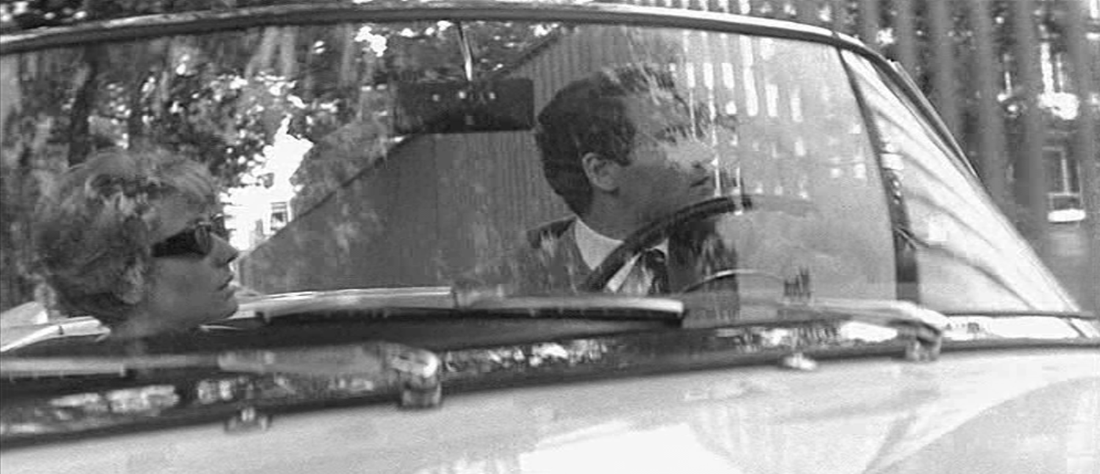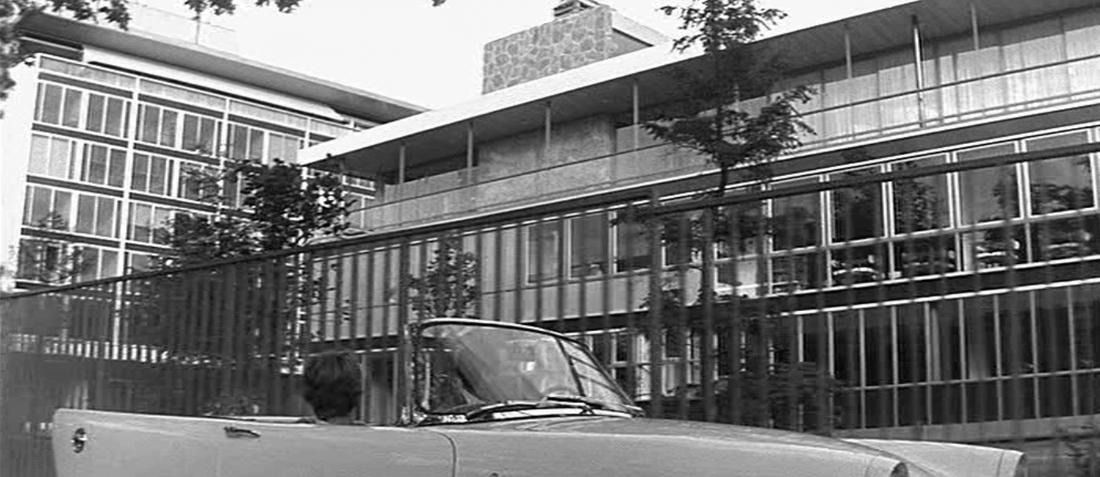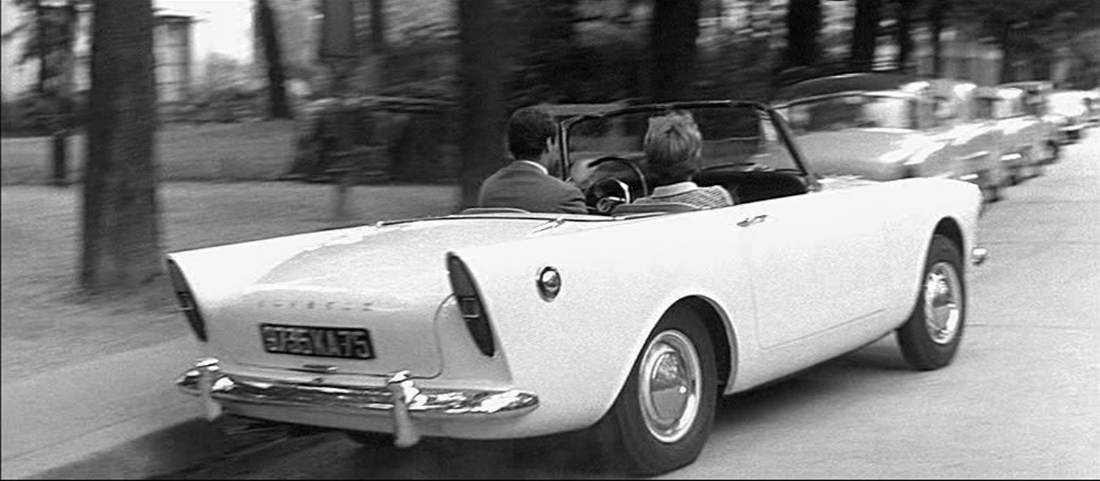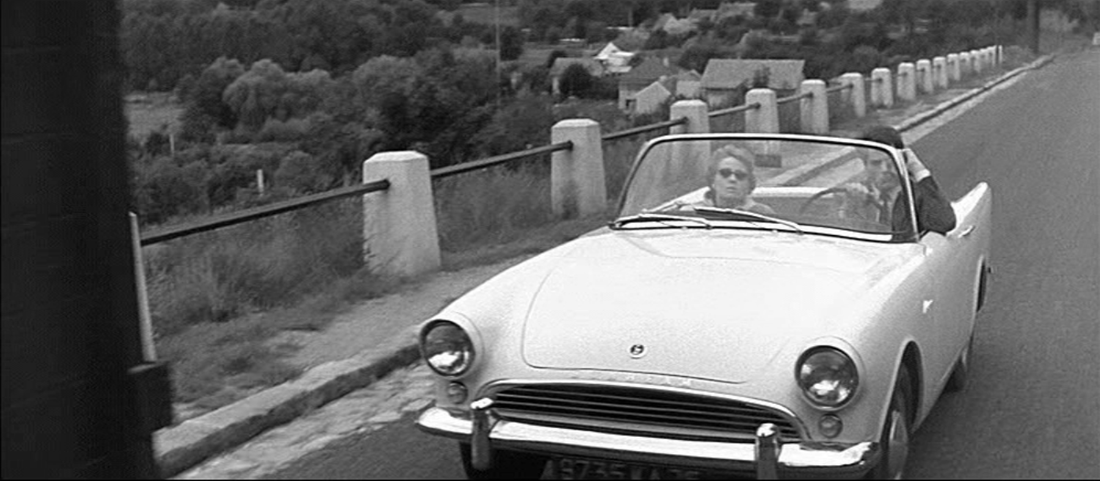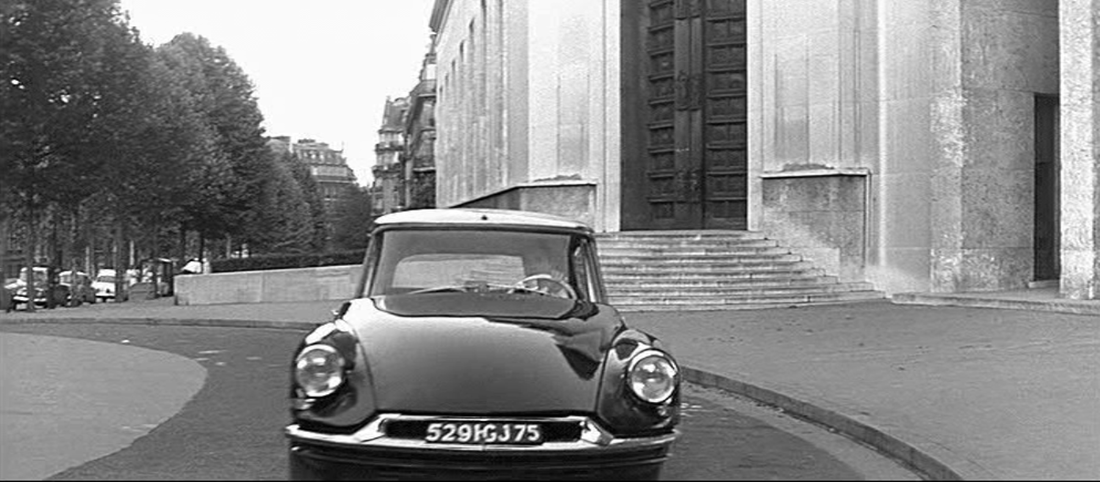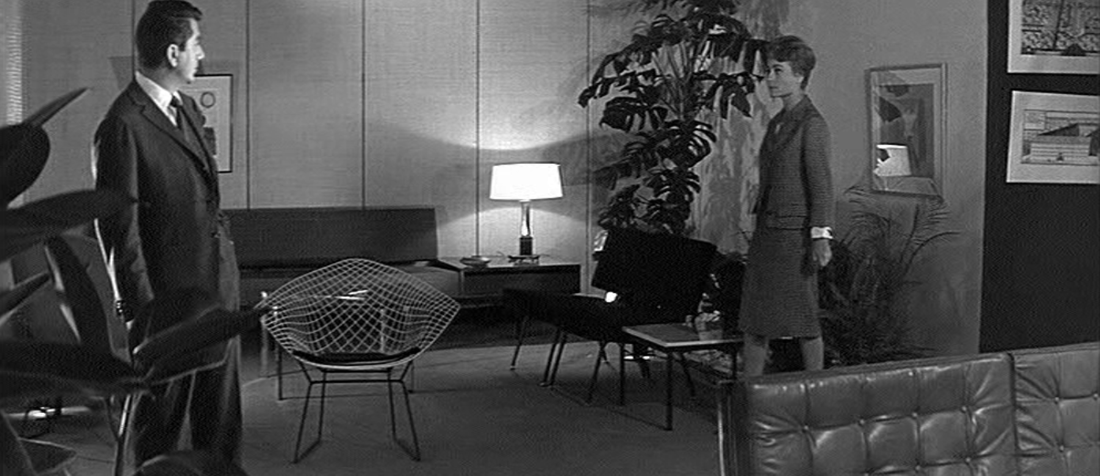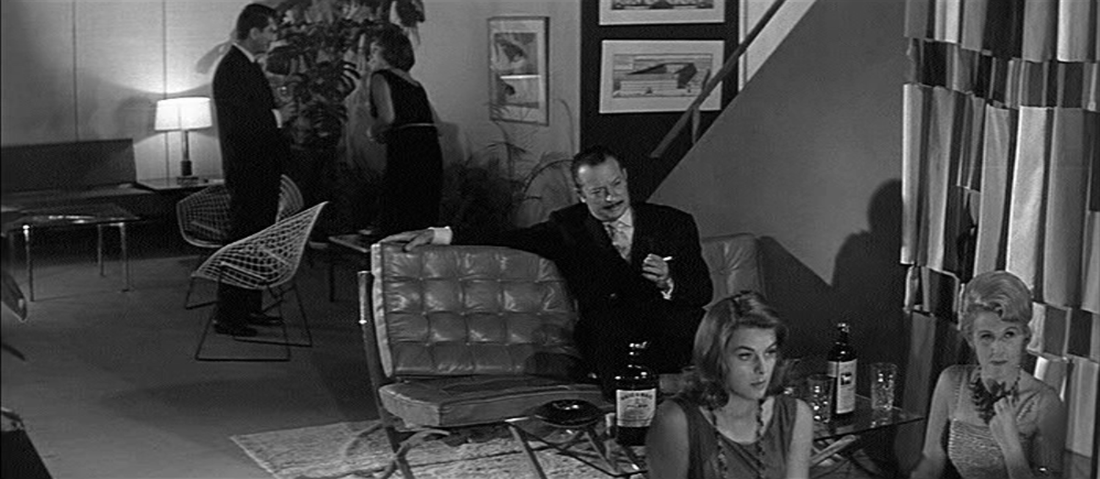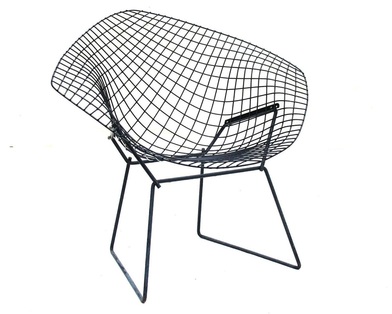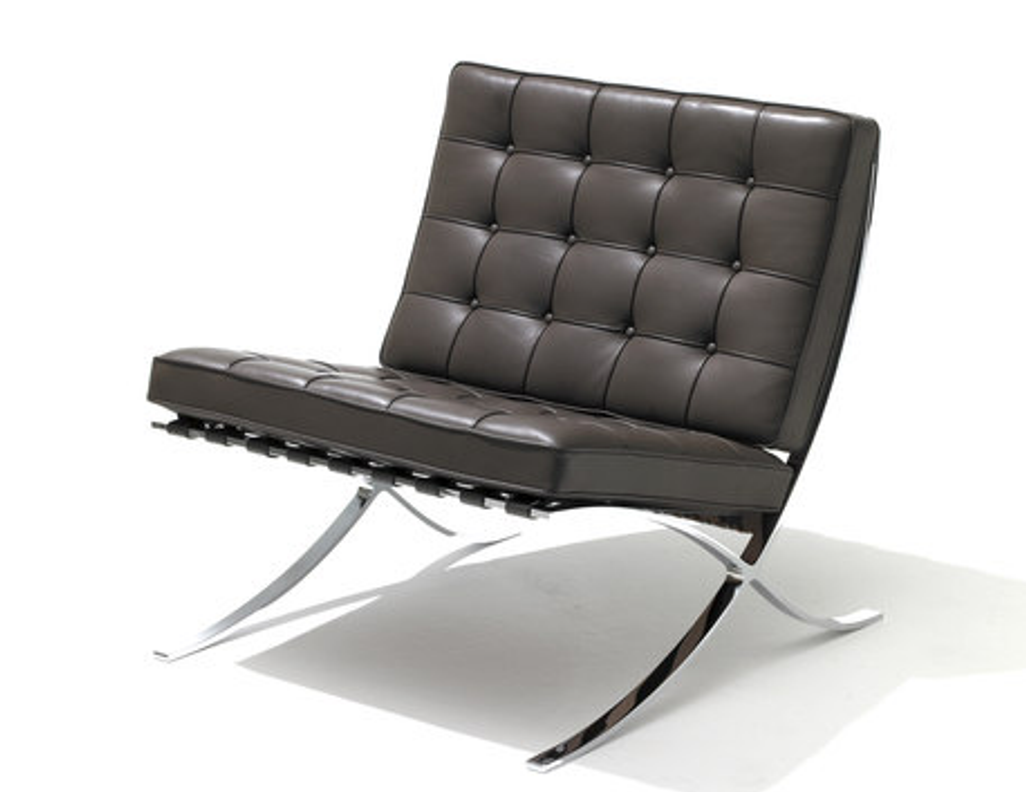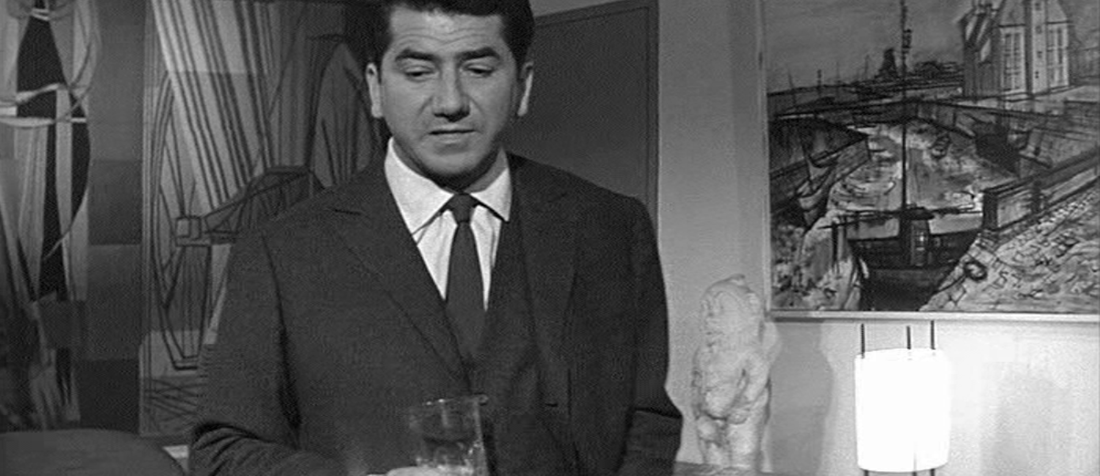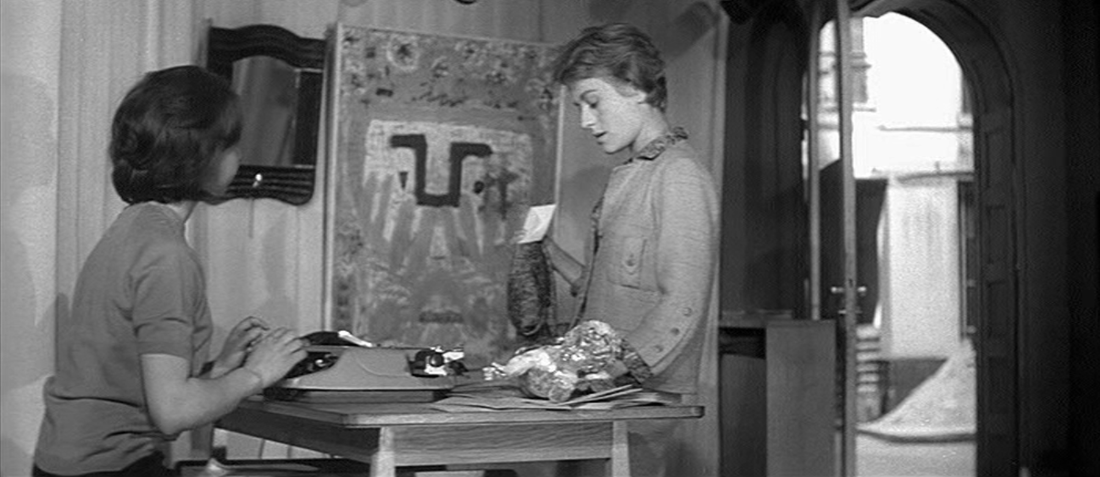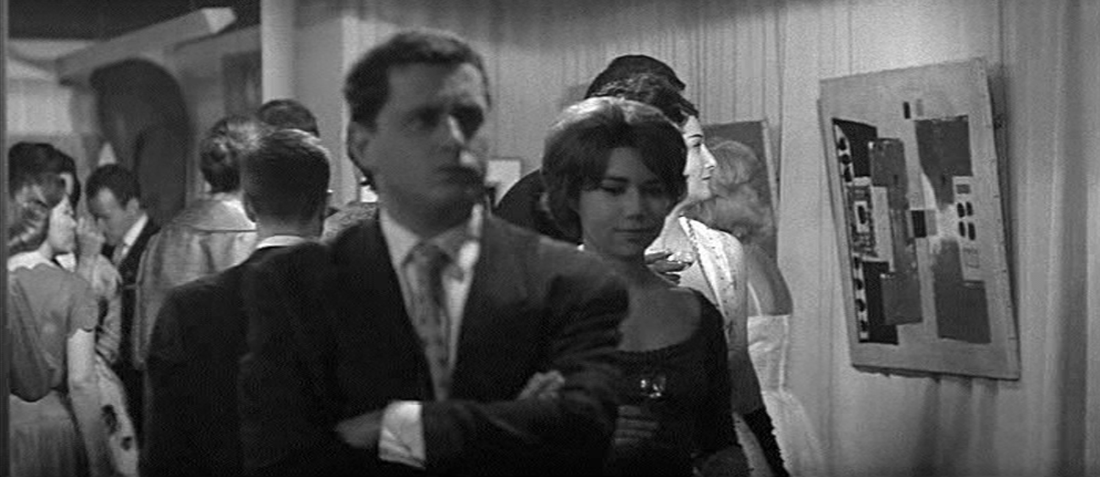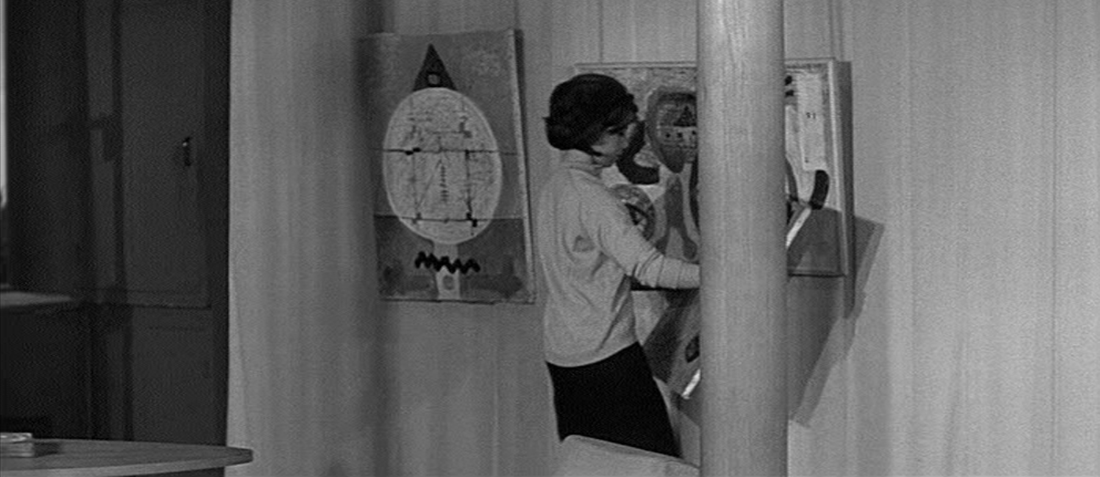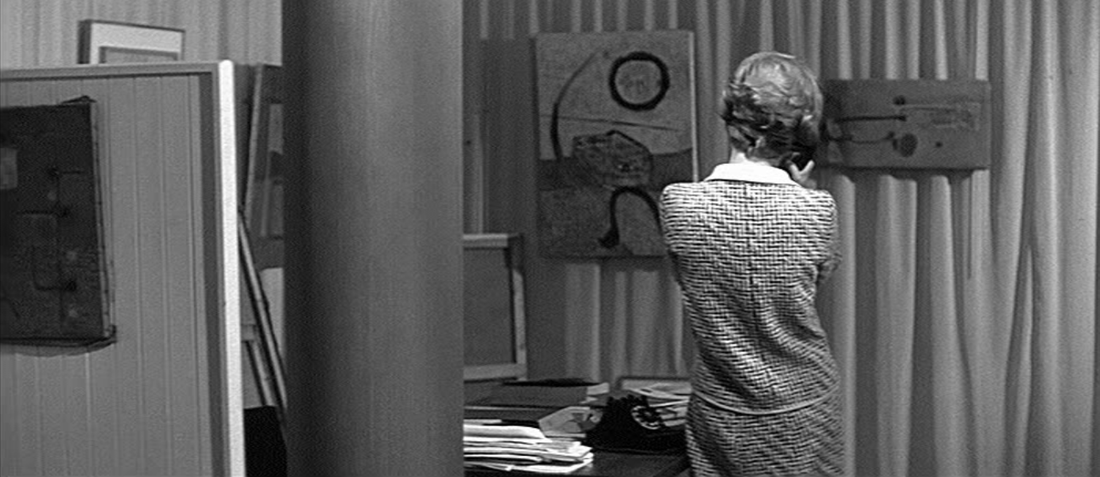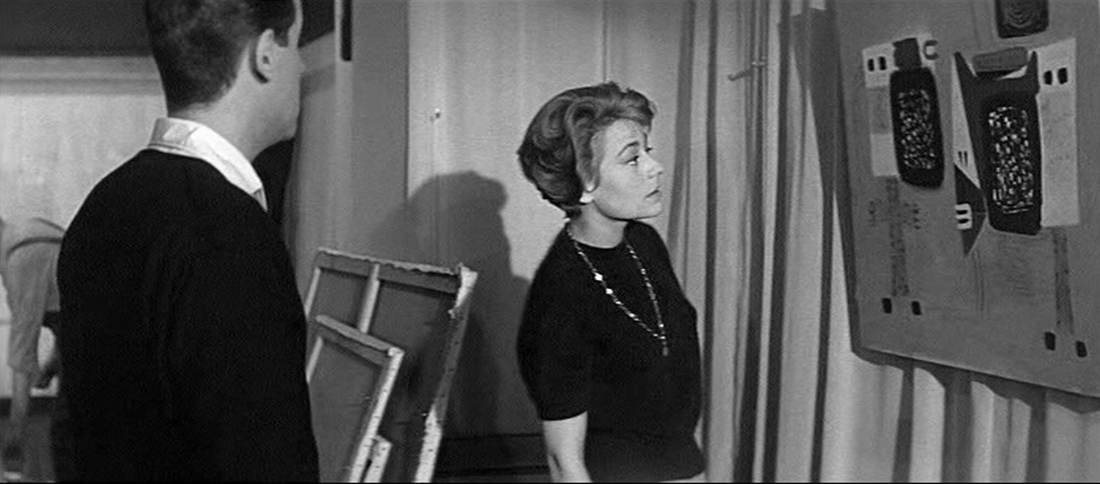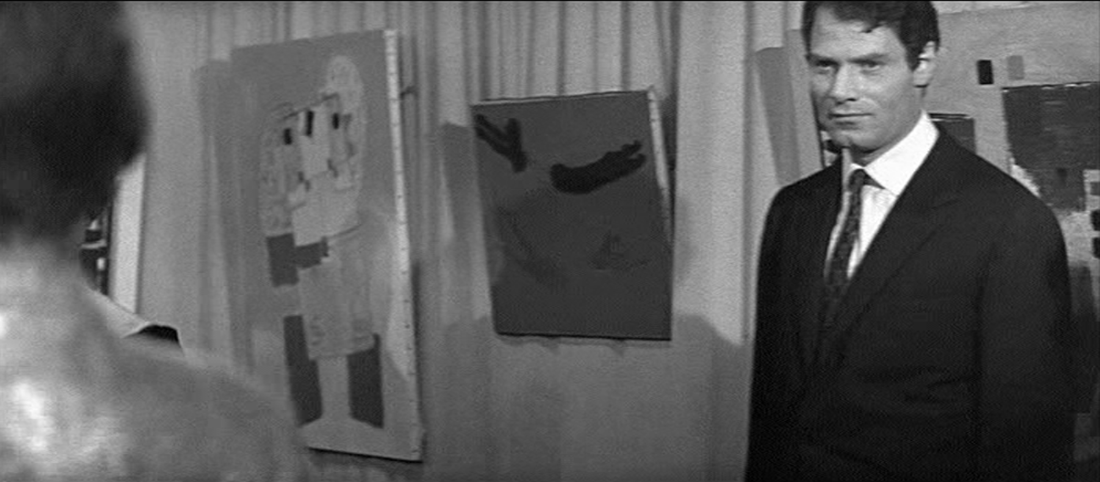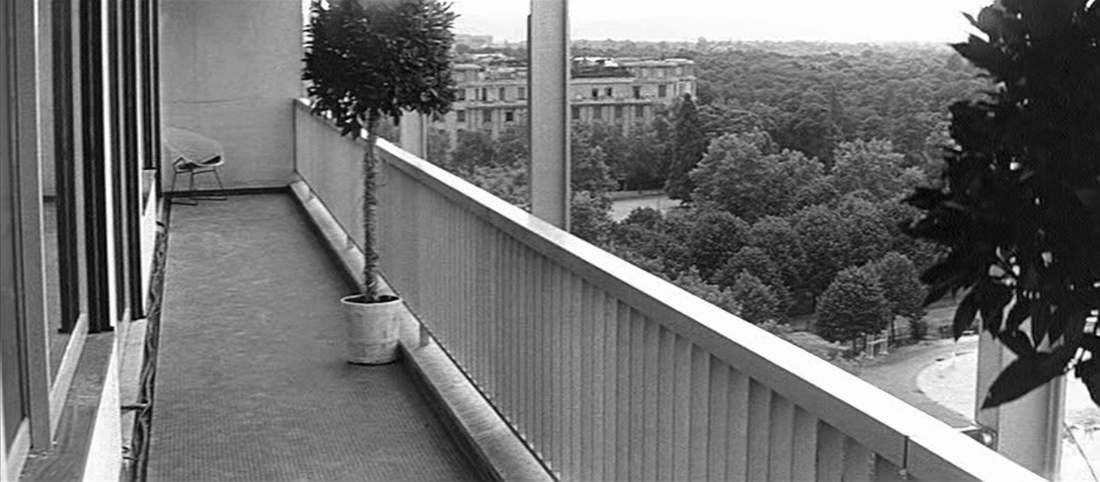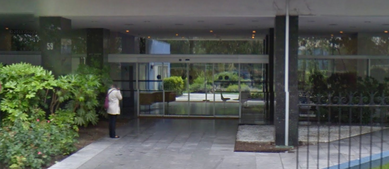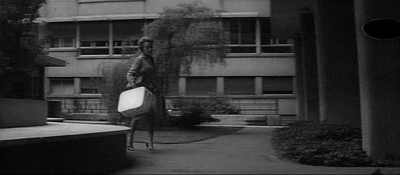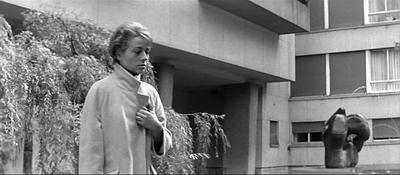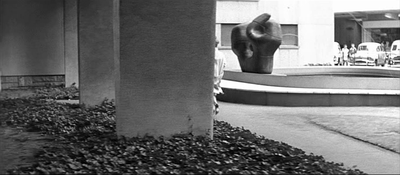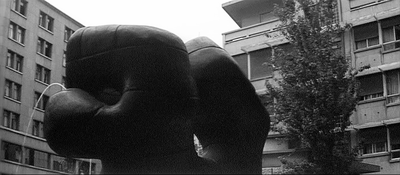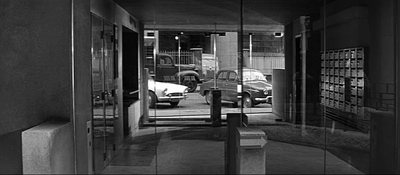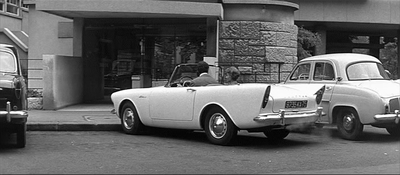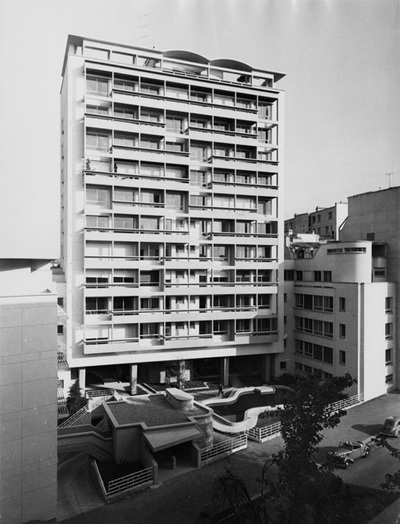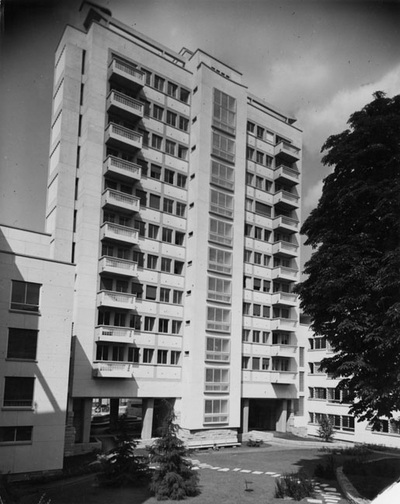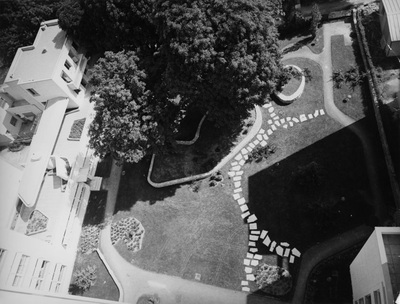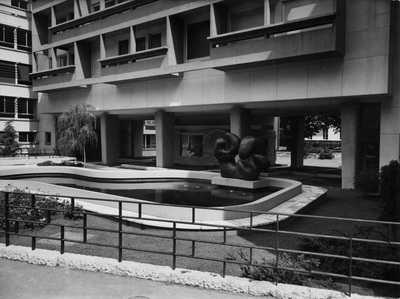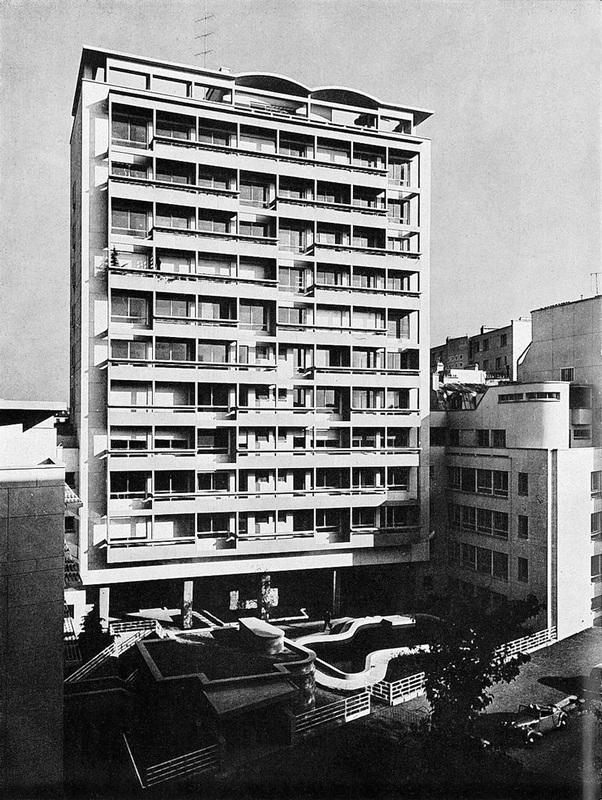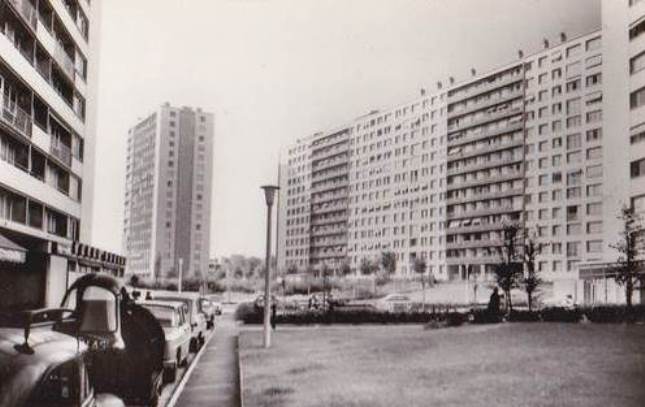a building site and some buildings:
Astruc's La Proie pour l'ombre & Marker's Le Joli Mai
Astruc's La Proie pour l'ombre & Marker's Le Joli Mai
Twelve minutes into Alexandre Astruc's La Proie pour l'ombre (1961), the protagonist visits her architect husband on the site of his latest project. The visit is shot as a single plan-séquence lasting two minutes forty-five seconds, one of several such tours de force that punctuate Astruc's film. (You can watch the sequence here.)
They are just in front of the two buildings in the top right of the postcard above, at 93-111 rue de la Santé (built 1960, architects Alfred Bernard, André Gonnot, Léo Solotareff and Pierre Sonrel).
As she arrives and leaves we have several views of buildings being demolished, last remains of a network of small streets and passages (rue Bullant, rue Ernest, rue Palmyre, passage & impasse Prévost, rue & impasse Maurice Mayer):
As she arrives and leaves we have several views of buildings being demolished, last remains of a network of small streets and passages (rue Bullant, rue Ernest, rue Palmyre, passage & impasse Prévost, rue & impasse Maurice Mayer):
The contrast of old and new prompts a telling exchange, as the husband asks her to admire his work:
- It's beautiful, isn't it?
- It always upsets me to see a house being demolished.
- I might have guessed. You're like a concierge getting sentimental over her charming old building, full of Baudelairian cat's piss... All the poetry of France.
- It's beautiful, isn't it?
- It always upsets me to see a house being demolished.
- I might have guessed. You're like a concierge getting sentimental over her charming old building, full of Baudelairian cat's piss... All the poetry of France.
Two years later, French cinema returns to this site to find the demolition completed:
This is where, in Le Joli Mai, Chris Marker and Pierre Lhomme record a conversation between two architects about residential urbanism, and more specifically about what should be built on this site. One suggests that the other's vision resembles Celesteville, the ideal city in the Babar books:
Which is a bit like what was built there:
Marker's film contrasts the architects' speculative idealism with present conditions in Aubervilliers, a working-class district north of Paris:
The sequence ends with one family from this milieu being rehoused to an estate in Aubervilliers:
Modern architecture is not an over-riding preoccupation of Le Joli Mai. A view of the just-built Point du Jour development at Boulogne is part of the opening montage of views over Paris, next to a view of the CNIT building at Puteaux:
A later montage shows the Les Courtillières estate in Pantin, a view beyond the Gare de Lyon of Créteil (I think), the Maison de la Radio on the avenue du Président Kennedy, 16e, and the Centre Universitaire Jean Sarrailh, 5e:
Just before the architects' conversation the voice-over speculates on the possibility of happiness in modern urban spaces, illustrated by a reverse tracking shot up a street and a right-to-left tracking shot past a building:
Update, 14.03.2015:
I had not been able to identify the buildings above, so am very grateful to the architects Fabienne Ponsolle and Laurent Machet, who have both written to say that this is the Résidence du Parc at Meudon-la-Forêt, and that the architect is Fernand Pouillon:
I had not been able to identify the buildings above, so am very grateful to the architects Fabienne Ponsolle and Laurent Machet, who have both written to say that this is the Résidence du Parc at Meudon-la-Forêt, and that the architect is Fernand Pouillon:
I am still in ignorance regarding another modern building moment in La Proie pour l'ombre, when the protagonist and her lover are driving slowly past what look like university buildings and he comments:
- It's fantastic, all these buildings, in glass, in steel. You'll see, in 2000 years people will come on pilgrimage to see them, like Notre Dame, or Versailles. It's beautiful, isn't it?
Architecture in Astruc's film is just one of a set of modernities that frame its story of modern marriage. The film is unusual in giving full credit, in legible type, to the creators or suppliers of the objects that fill its spaces:
It is refreshing to see a film give credit to automobiles alongside home furnishings, painting and architecture, and this 1959 Sunbeam Alpine Series 1 is indeed a beautiful object:
Though there is no credit for the film's other instance of classic vehicular design, a 1960 Citroen DS 19:
As for the other objects credited, I haven't scanned the Knoll catalogues to track down all of the furniture in the protagonists' apartment, but we can see here, at least, a Harry Bertoia diamond chair and a doubled version of a famous chair by Mies van der Rohe, both manufactured by Knoll:
The credits signal the collaboration of the Galerie Jacques Peron. Possibly it supplied the paintings that accompany the furniture in this décor. Only two are given prominence, a canal scene that looks very much like a Bernard Buffet and a much more interesting abstract work. possibly a tapestry, that I cannot identify (suggestions, please):
It is also possible that the gallery's credit was just for standing in as the gallery run by the protagonist, on the rue du faubourg Saint Honoré.
We see her arranging pictures for an exhibition, and then the exhibition itself. The pictures shown are supposed to be by an artist called Robinski, and are all interesting enough, but sadly I cannot identify the actual artist:
We see her arranging pictures for an exhibition, and then the exhibition itself. The pictures shown are supposed to be by an artist called Robinski, and are all interesting enough, but sadly I cannot identify the actual artist:
Artists associated with the gallery around this time include Antonio Guansé, Laurent Jiménez-Balaguer, René Fumeron, Pierre Székely and Odette Ducarre, but there isn't any match between the paintings above and any works by these artists that I have been able to see.
Unusually, again, the film credits a building used as location and the architect who designed it. Unfortunately, the credit reads 'Architecte M. GUISBERG', when the designer of the apartment building at 59-65 boulevard Lannes is actually Jean Ginsberg, one of France's great Modernist architects. (See here for images of buildings designed by Ginsberg.)
Of his work on the boulevard Lannes we see the apartment interior, the landing, and the balcony. The appearance of the apartment is chiefly down to its furnishings, the landing is anonymous, but I like the balcony:
Unusually, again, the film credits a building used as location and the architect who designed it. Unfortunately, the credit reads 'Architecte M. GUISBERG', when the designer of the apartment building at 59-65 boulevard Lannes is actually Jean Ginsberg, one of France's great Modernist architects. (See here for images of buildings designed by Ginsberg.)
Of his work on the boulevard Lannes we see the apartment interior, the landing, and the balcony. The appearance of the apartment is chiefly down to its furnishings, the landing is anonymous, but I like the balcony:
What we don't see is the building's façade or any of its ground-floor common parts:
When the protagonist arrives at or leaves her home, we do see see a ground floor entrance and courtyard, including a modern sculpture-fountain:
However, this is not 59-65 boulevard Lannes, but another building by Jean Ginsberg, only a short distance away at 19 rue du Docteur Blanche, known as the Résidence de la Muette:
It was designed in collaboration with Georges Massé and finished in 1953. For details see here. The sculpture is by Pierre Székely and André Borderie (see here). Székely had a one-man show at the Galerie Jacques Peron in 1960, which may explain how the film came to use this building as a location.
This is, anyway, a much more interesting building by Ginsberg than the one that is credited by the film. We see much more of it, and also get a glimpse of the Résidence Montmorency opposite, a massive complex from 1957:
Unfortunately, that is the most the film makes of what is actually an enclave of Modernist architecture. We see nothing of the six villas in the rue Mallet-Stevens round the corner (see here) nor of Le Corbusier and Jeanneret's two villas further up the street (see here). Perhaps the contrast between High '20s Modernism and the debased '60s variant advocated by the film's architect-protagonist would have been too obvious.
The same might have been true had Astruc used Ginsberg's most famous building, at 25 avenue de Versailles, which he designed with Bertold Lubetkin in 1928 (see here). The contrast with the 1950s' work of Jean Ginsberg is more subtle.
The same might have been true had Astruc used Ginsberg's most famous building, at 25 avenue de Versailles, which he designed with Bertold Lubetkin in 1928 (see here). The contrast with the 1950s' work of Jean Ginsberg is more subtle.
